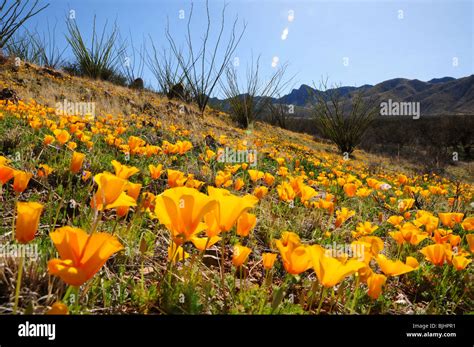The Secret Life of Mexican Poppies in the Desert
The vibrant orange blaze of the Mexican poppy ( Papaver californicum) is a fleeting but unforgettable spectacle in the deserts of southwestern North America. These ephemeral beauties, often mistaken for their California cousins, hold a fascinating secret life, perfectly adapted to the harsh conditions of their arid habitat. Their existence is a testament to the resilience and beauty found in even the most challenging environments.
What makes Mexican poppies unique?
Unlike many desert plants that conserve water through drought-resistant features, Mexican poppies employ a different strategy. They are annuals, meaning their entire life cycle—from seed germination to seed dispersal—occurs within a single year. This rapid lifecycle is key to their survival in unpredictable desert climates. They capitalize on the short window of spring rains to complete their life cycle before the scorching summer heat arrives.
How do Mexican poppies reproduce?
H2: How do Mexican poppies reproduce?
Mexican poppies are highly efficient reproducers. They rely on wind dispersal for their tiny, poppyseed-like seeds. These seeds, remarkably durable, can lie dormant in the soil for years, waiting for the perfect conditions—sufficient moisture and warm temperatures—to germinate. This remarkable adaptation ensures the continuation of the species even in years with minimal rainfall.
Where do Mexican poppies grow?
H2: Where do Mexican poppies grow?
These dazzling flowers aren't confined to a single location. They thrive in a range of desert and semi-desert habitats across southwestern North America, including parts of California, Arizona, Nevada, Utah, and Mexico. They prefer well-drained, sandy or gravelly soils, often found on hillsides and disturbed areas. Look for them in areas with full sun exposure.
Why are Mexican poppies important to the ecosystem?
H2: Why are Mexican poppies important to the ecosystem?
Mexican poppies play a crucial role in their ecosystem. Their vibrant flowers attract pollinators like bees and butterflies, contributing to the overall pollination network. Their seeds provide a vital food source for birds and other desert animals. Furthermore, their presence indicates relatively undisturbed and healthy desert soil conditions.
What are the challenges facing Mexican poppies?
H2: What are the challenges facing Mexican poppies?
Despite their resilience, Mexican poppies face several threats. Habitat loss due to urbanization and agricultural expansion is a significant concern. Changes in rainfall patterns due to climate change could also impact their ability to complete their life cycle. Overgrazing can also reduce the number of suitable germination sites.
What can we do to protect Mexican poppies?
H2: What can we do to protect Mexican poppies?
Protecting these beautiful wildflowers requires a multifaceted approach. Supporting conservation efforts that protect desert habitats is crucial. Responsible recreation, avoiding trampling of plants, and supporting sustainable land management practices are also essential. Raising awareness about the importance of these plants and the delicate balance of the desert ecosystem is equally important.
Are Mexican poppies poisonous?
H3: Are Mexican poppies poisonous?
Like many poppies, Mexican poppies contain alkaloids, though not in concentrations typically considered toxic to humans. However, it’s always best to admire them from a distance and avoid ingesting any part of the plant.
Conclusion
The seemingly simple Mexican poppy holds a wealth of secrets. Its fascinating life cycle, its vital role in the desert ecosystem, and its vulnerability to environmental pressures highlight the need for continued conservation efforts. By appreciating the beauty and resilience of these fleeting wildflowers, we can better understand and protect the fragile ecosystems they call home. Their vibrant orange against the stark desert landscape serves as a powerful reminder of nature’s enduring beauty and tenacity.

